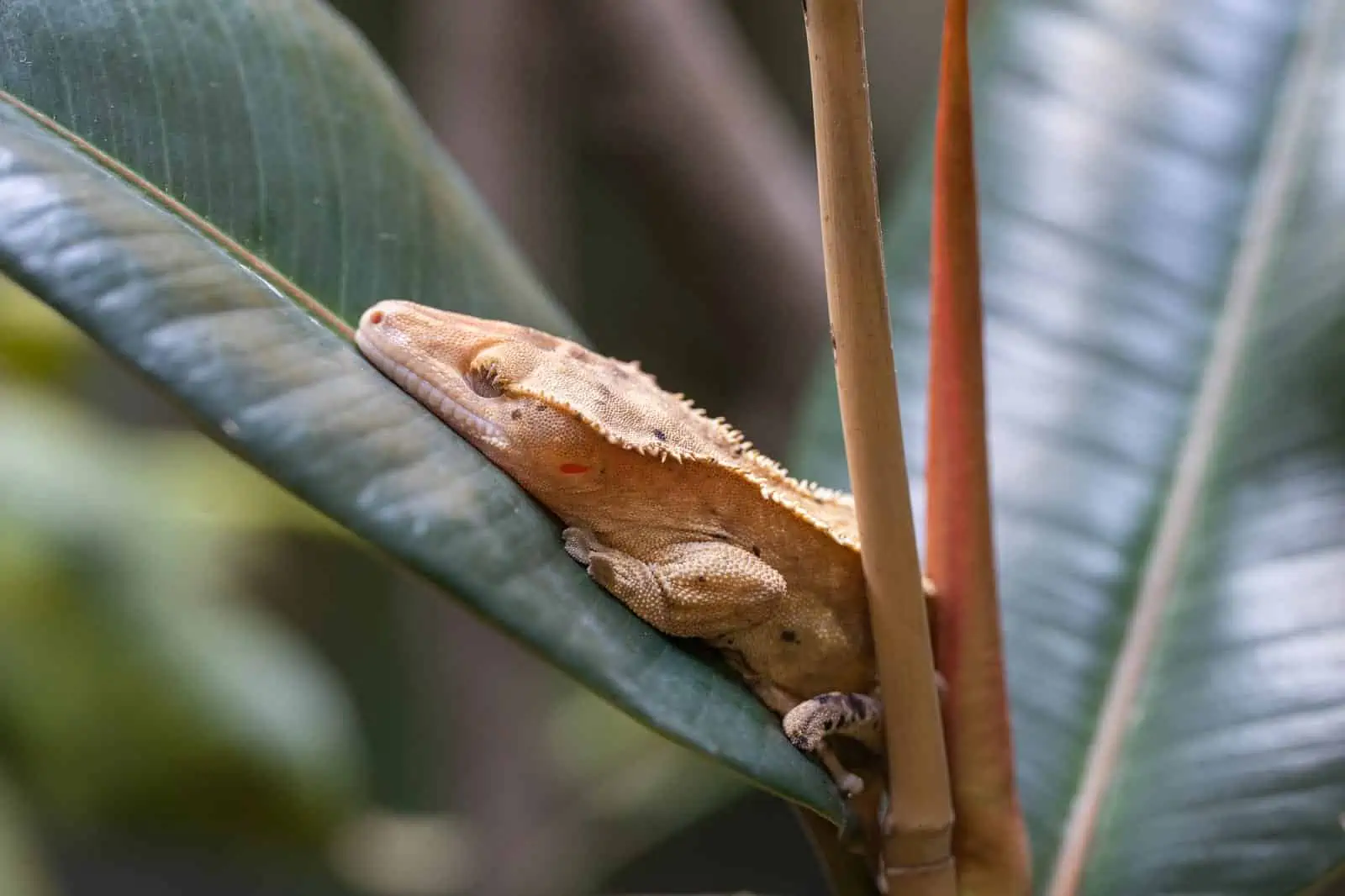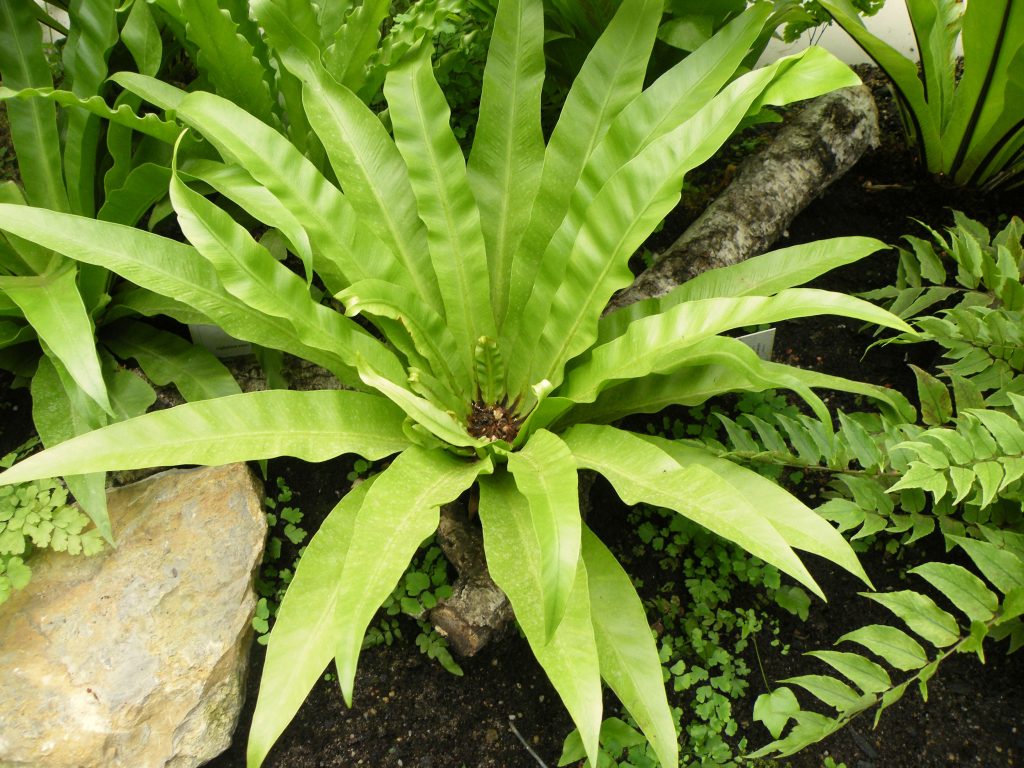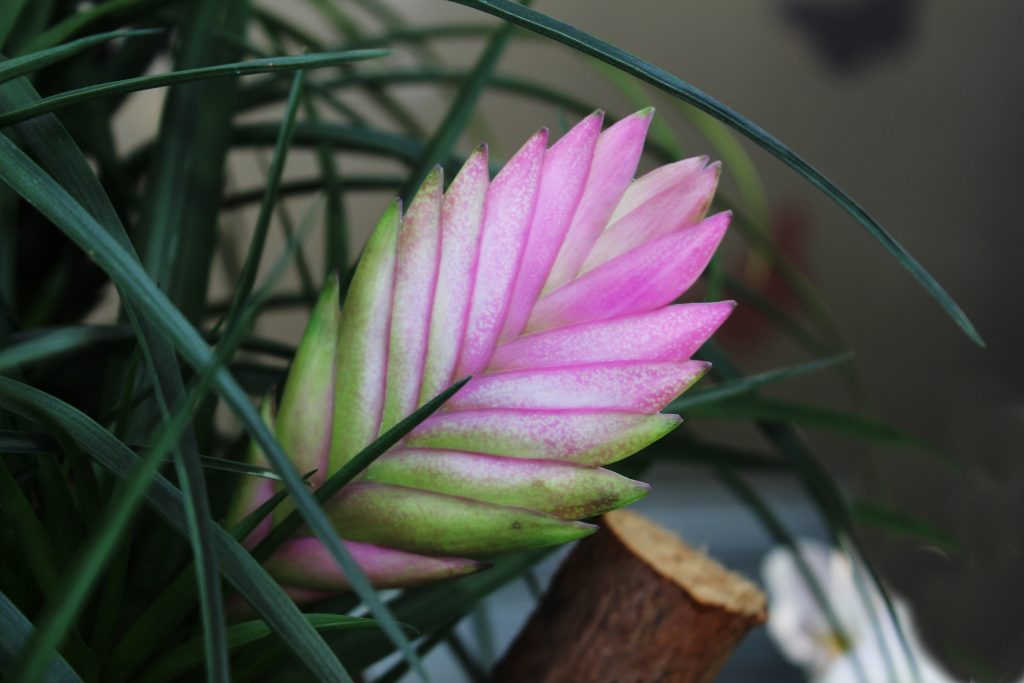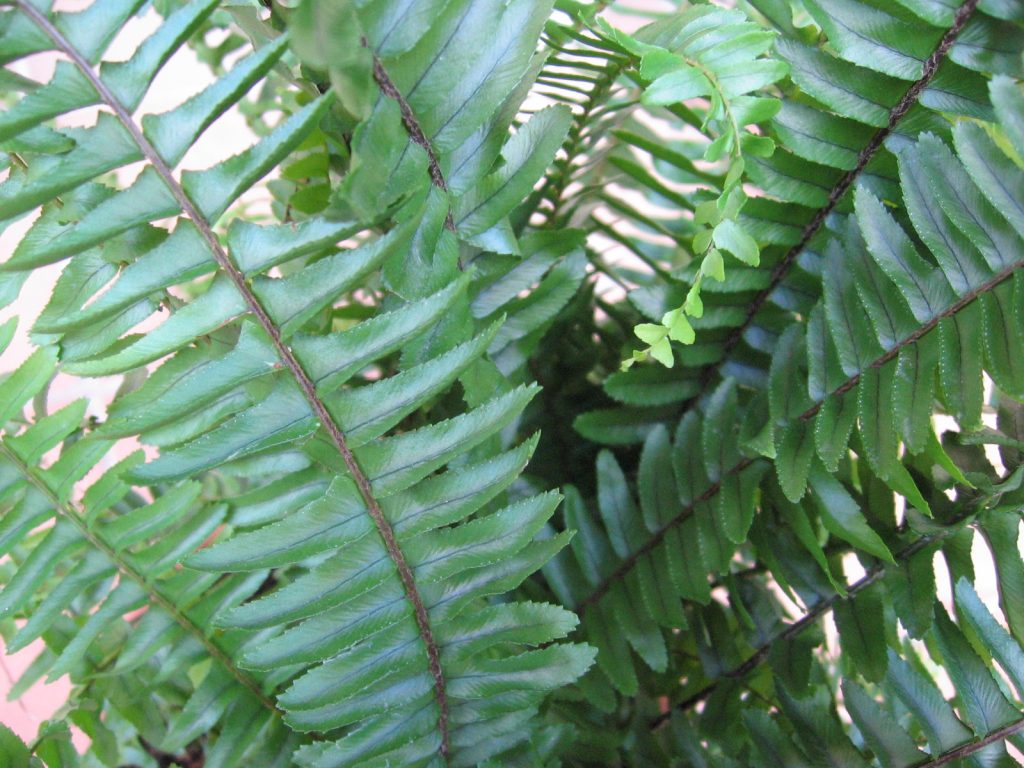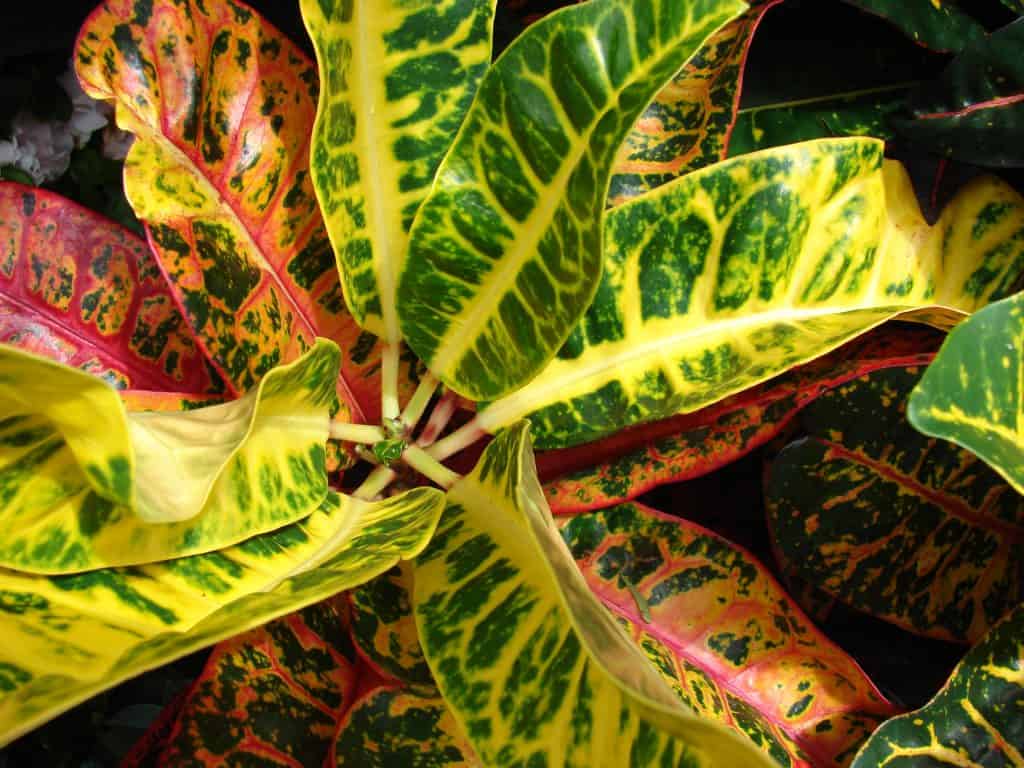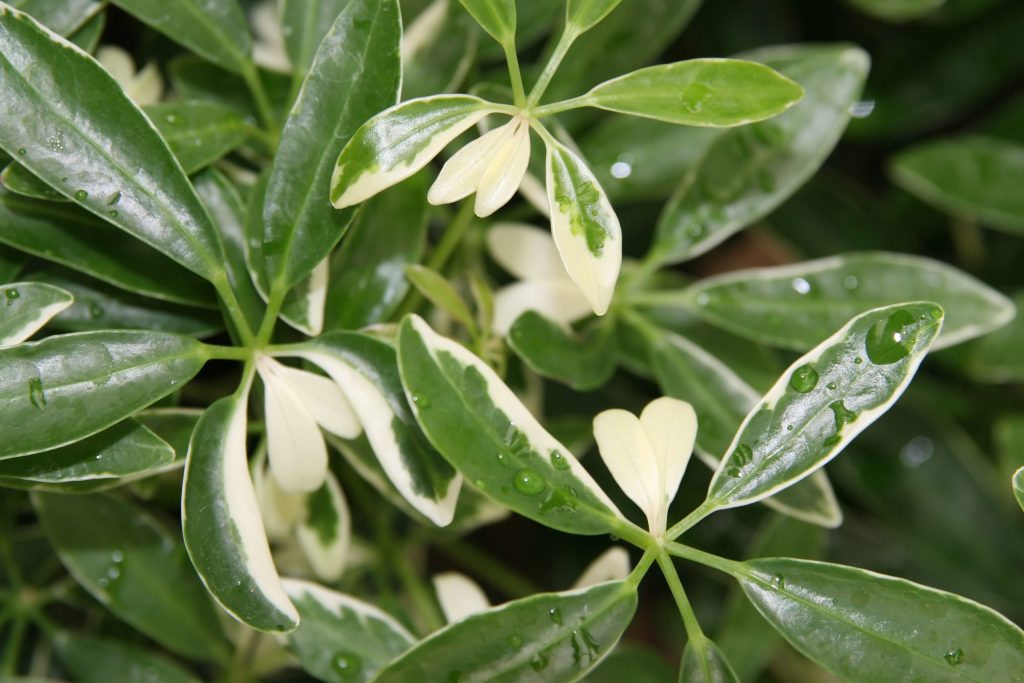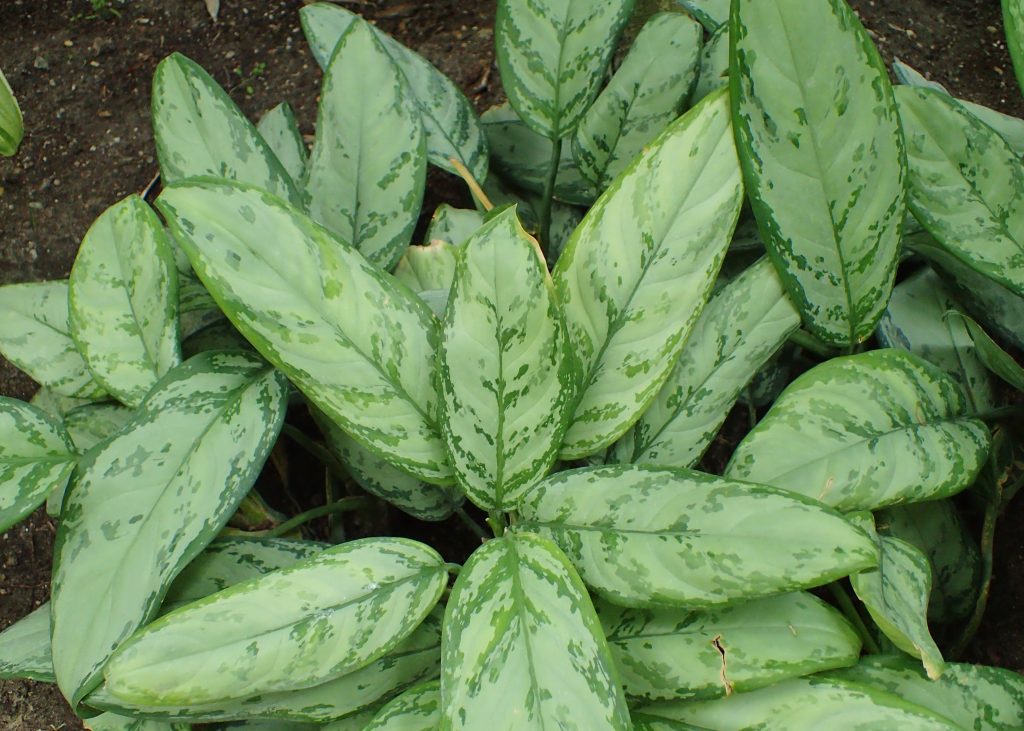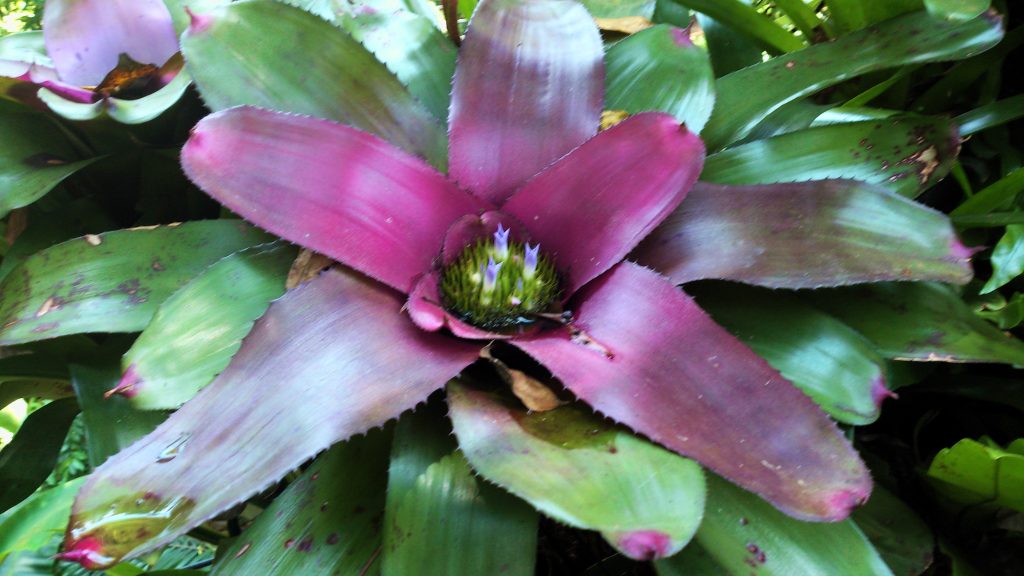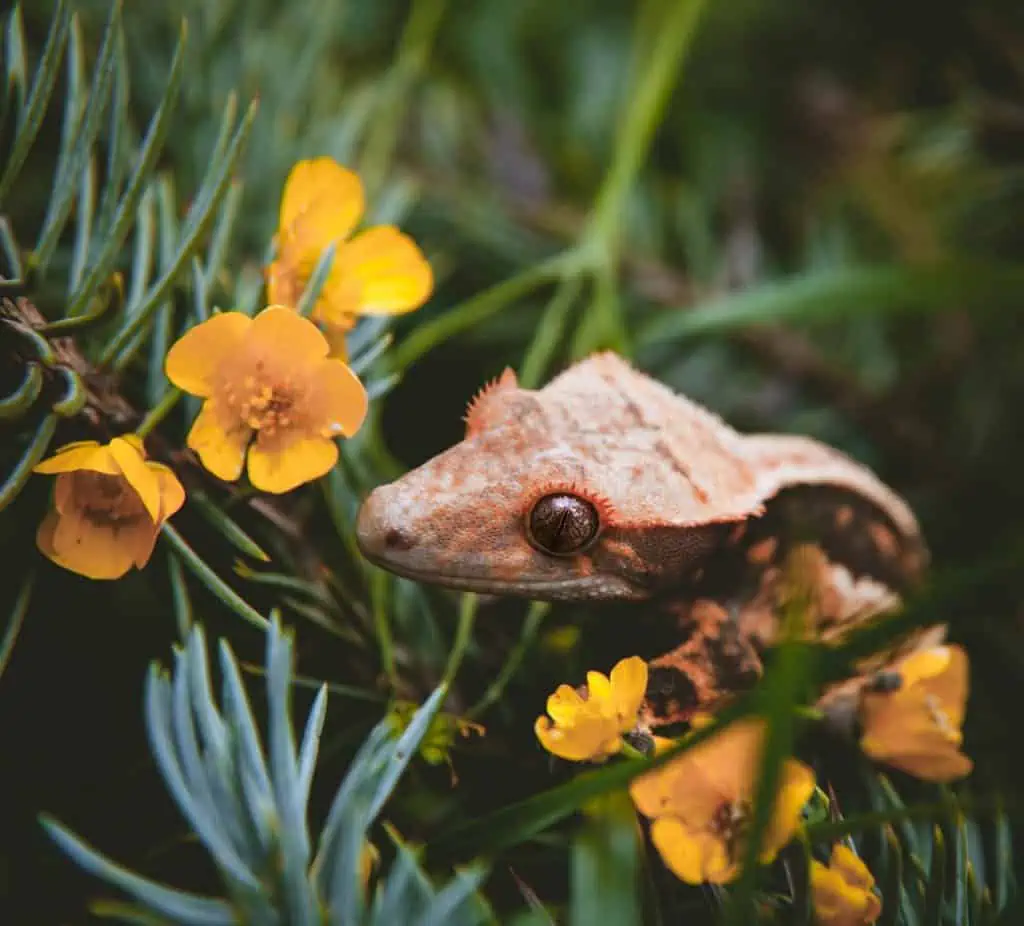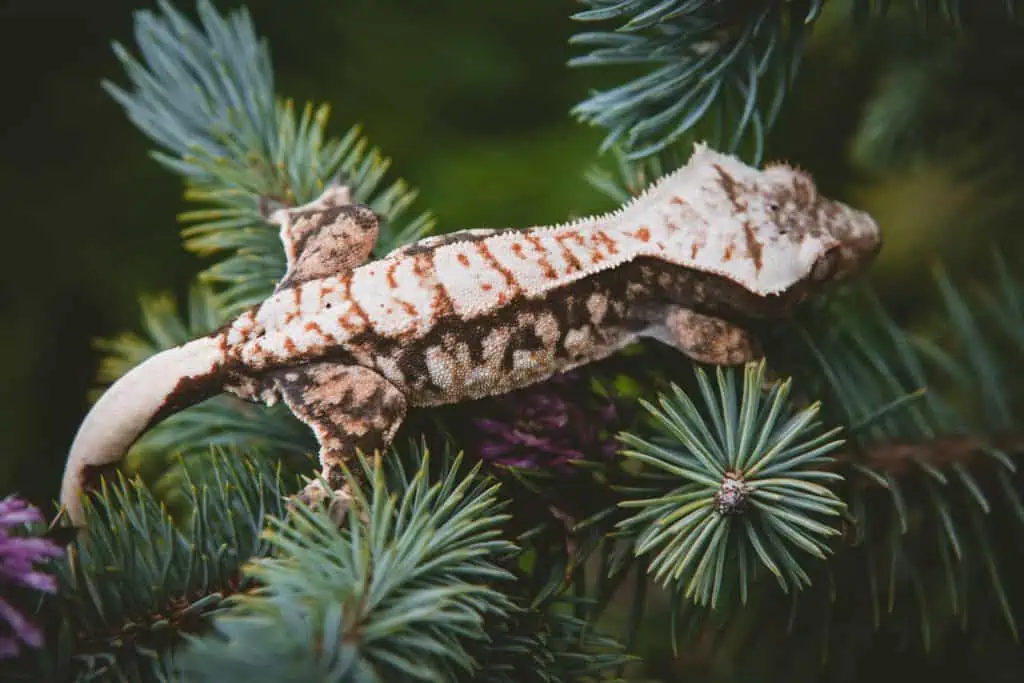Crested geckos originate from the lush, tropical rainforests of New Caledonia, a cluster of islands in the South Pacific characterized by dense canopies of trees, a humid climate, and a profusion of flourishing plants. Quite the paradise.
So why must you create a similar environment in your crestie’s tank? Well, these little guys have evolved over thousands of years to thrive in these conditions; their bodies are adapted to a certain temperature, humidity level, and light cycle, all influenced by the local flora.
Plants in your buddy gecko’s natural habitat play several roles:
- They offer shelter, a place for the geckos to hide and feel secure
- Maintain humidity by releasing water into the air, just like in the rainforest back home
- Allow geckos to utilize plants as launching pads to pounce upon unsuspecting insects!
So, it’s not just about creating a visually appealing tank. It’s also about recreating the optimal environment for your crestie to exhibit natural behaviors critical to its health and happiness.
Importance of Choosing the Right Plants for Your Crested Gecko
Crested geckos require specific types of plants to remain healthy. Not all plants suit crested geckos, and some should be avoided. By selecting the right plants for your scaly friend, you can ensure they remain healthy and happy in their environment.
- The most important factor when choosing plants for your buddy gecko is safety. Your crestie will likely be interacting with the plants in their environment. Therefore, ensuring the plants are nontoxic and not harmful to your gecko if ingested is important. It is also important to ensure the plants are free from parasites and disease.😊
- In addition to safety, selecting plants that are natural to the lizard gecko’s native habitat is also essential. This will ensure your gecko can quickly adapt to the environment and feel comfortable in its new home. Tropical plants are a great choice because they prefer the same warm and humid environment as our geckos.
- To provide a suitable habitat for crested geckos, it’s important to include plants in their vivarium that offer sturdy branches or broad leaves for climbing and hiding. This is because crested geckos are arboreal creatures, meaning they spend most of their time climbing trees.
- Finally, select plants that are easy to care for and maintain. By selecting low-maintenance plants, you can ensure that your gecko’s habitat remains healthy.
10 Safe Plants for Crested Geckos
When setting up a crested gecko tank, it’s important to make sure that you choose plants that are safe for them. To help you out, I’ve compiled a list of 10 plants that are safe to be used in crested gecko tanks. 😉
1. Pothos (Epipremnum Aureum)
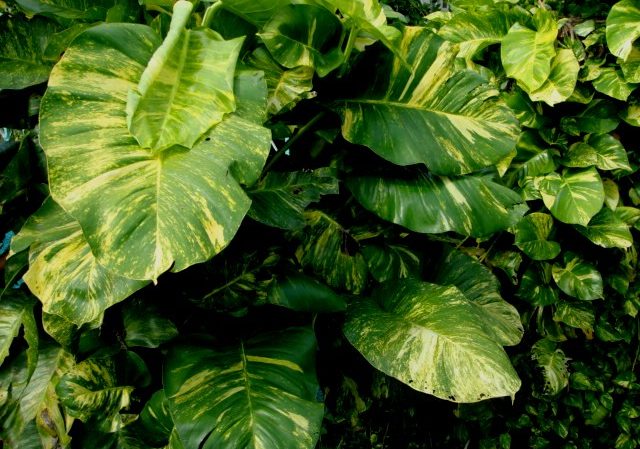
As a crested gecko enthusiast, I highly recommend using Pothos (also known as Devil’s Ivy) in your vivarium. It’s one of the most popular plant choices, and I’ve used it for years. It’s the perfect plant to create natural hiding spots. It has rapid growth, an eye-catching green color, and large leaves for climbing.
The pothos vine’s low-lying nature enables it to support the weight of a crestie without breaking. Plus, it can thrive in the same conditions our geckos love!
Maintenance: Maintaining your Pothos is easy peasy! All you need to do is give it moderate water with 50-70% humidity and some bright lighting.
You’ll get the most vibrant colors if you keep it in well-dampened soil and brighter light. They can tolerate the temperature range between 60 to 80°F, which is suitable for a crested gecko. In other words, this plant is the perfect pick for any low-maintenance vivarium!
Toxicity: It’s mildly to moderately toxic. While safe for reptiles to consume in small amounts, it is considered toxic for dogs and cats.
Key Takeaways
- Growth Rate: Fast
- Sturdiness: Very sturdy and can withstand various conditions and handling.
- Light Requirements: Indirect light – ranging from low to bright.
- Maintenance: Easy; water the plant when the soil is dry, and it can withstand being ignored.
- Toxicity: Non-toxic and safe for your gecko to nibble on moderately.
2. Snake Plant or Mother-In-Law’s Tongue (Sansevieria Trifasciata)
The Snake plant is a showstopper in any vivarium! You can’t miss its distinctive upright shoots that are sword-shaped and a bright green or creamy white. It’s not the best for climbing, but its tough leaves make it an ideal option if you’re looking for a decorative hiding spot.
With a 40-60% humidity tolerance range, it’s a hardy plant that’ll survive any gecko enclosure and can bear up to 75°F temperature.
Maintenance: When it comes to maintenance, snake plants won’t take much of your time: they’re hardy and don’t need a lot of light. You don’t have to worry about humidity; you only have to water it once the soil has dried.
Toxicity: If your pet eats a lot of this plant – it can be poisonous; therefore, monitor any tendency to nibble on it.
Key Takeaways
- Growth Rate: Slow to moderate
- Sturdiness: Extremely sturdy – indestructible
- Light Requirements: Low to bright light
- Maintenance: Minimal-maintenance – water infrequently, can tolerate neglect
- Toxicity: Toxic in high quantity
3. Bird’s Nest Fern (Asplenium Nidus)
The Bird’s Nest Fern brings a unique flair to your vivarium, its wavy foliage and roundish shape resemble a nest! It’s a beautiful, bright green fern with large leaves that give your crestie plenty of places to hide and cool down.
However, watch out – it’s a fast-growing plant that can quickly take over the mid-ground of your tank if left unchecked. So, prune it regularly and keep it looking nice and neat. You’ll be glad you did! The leaves of this fern can get quite large, so don’t let it get too big for the space.
Although the Bird’s Nest Fern can’t be used for climbing, its center can accommodate the weight of a gecko. To ensure maximum sturdiness, keep the plant small and position it close to other stronger plants.
Maintenance: This tropical plant is a breeze to take care of – as long as you keep it nice and moist. It loves indirect light (max temperature of 80°F), and the humidity of a crested gecko’s habitat (40, 60%) is perfect for it.
However, ensure you don’t overwater; those waxy fronds don’t need to be soaked constantly. And even if you’re a little late with a drink – it won’t mind too much. So this plant is basically what you’d call a hard-to-kill, low-maintenance friend!
Toxicity: Non-toxic to reptiles – if your buddy geckos ingest it, it will not pose any health risks.
Key Takeaways
- Growth Rate: Fast
- Sturdiness: Very sturdy and can withstand various conditions and handling.
- Light Requirements: Prefers indirect sunlight – from low to medium.
- Maintenance: Medium-maintenance plant – it prefers high humidity and requires regular watering.
- Toxicity: Non-toxic and ingestable.
4. Pink Quill (Tillandsia Cyanea)
The pink quill is perfect for adding color to your vivarium. This plant has thick pink branches with thin green fronds, later giving way to beautiful violet flowers – which won’t harm your gecko.
Being an air plant, it doesn’t require soil and can be mounted on driftwood or other surfaces. Plus, it’s sturdy and can easily withstand an adult gecko’s weight and climbing tendencies! Your pink quills won’t wilt in the high-moisture (50% or higher) vivarium.
Maintenance: These plants are a breeze to keep alive! All they need is some bright light (with a max temperature of about 75°F) and a bit of water every week. To prevent rot, allow the plant to dry out between waterings.
Toxicity: If your crestie enjoys eating violet flowers, it’s alright because geckos eat pollen and nectar and this plant is not harmful to pets.
Key Takeaways
- Growth Rate: Moderate
- Sturdiness: Despite being sturdy, it’s delicate to the touch due to its thin leaves.
- Light Requirements: Bright, indirect light
- Maintenance: Low maintenance – requires good air circulation and occasional misting.
- Toxicity: Non-toxic
5. Lemon Button Fern (Nephrolepis Cordifolia)
The Lemon Button Fern is a small type of fern ideal for a crested gecko vivarium. Its light lemon-scented leaves are round and button-like, making it a great contrast to other larger plants. It gives your enclosure a sense of depth and texture and provides ample coverage for your gecko.
However, its delicate nature makes it unable to withstand the weight of your gecko – but it is good for hiding.
Maintenance: It’s easy! You need to keep it moist (not wet), trimmed and in an environment with plenty of humidity (60% or higher) – perfect for your friend gecko’s home. Plus, indirect light and regular watering will keep it thriving. Just don’t go overboard – you don’t want to drown it!
Toxicity: Lemon buttons are non-toxic to crested geckos and other reptiles. The lemon scent of this plant can act as an attractant for geckos and other reptile species, making it an ideal addition to a terrarium.
Key Takeaways
- Growth Rate: Moderate to Fast
- Sturdiness: Hardy can tolerate rough handling to some extent.
- Light Requirements: Partial shade to full sunlight – can tolerate 80°F or 27°C temperature.
- Maintenance: Moderate-maintenance – it prefers moist soil but not excessively wet.
- Toxicity: Non-toxic
6. Petra (Codiaeum Variegatum)
The petra is a stunning plant with bold leaves that come in yellow, red, and green shades. Its broad fronds provide a sturdy climbing structure and a captivating vivarium aesthetic. And you won’t be disappointed. Its woody stem makes it perfect for supporting the weight of a crested gecko.
The petra loves the humidity, but sudden environmental changes can cause it to shock. Don’t be surprised if leaves suddenly drop and regrow.
This plant can serve as a primary structural component for the vivarium.
Maintenance: You only need to take care of your plant moderately. Ensure the soil dries out between waterings, but they can handle humidity (40, 60%). You don’t need to worry about lighting too much either; they love bright light (with max temperature 85°F) but can cope with lower light over time.
Toxicity: Petra is toxic to dogs and cats but is not known to be toxic to crested geckos. It is generally recommended that plants in the Codiaeum genus not be used as a food source for crested geckos. The plant itself is not known to be toxic because its leaves contain toxic saponins, which can cause vomiting, diarrhea, depression, or anorexia.😮
Key Takeaways
- Growth Rate: Slow to Moderate
- Sturdiness: Flexible lighting – bright to low light.
- Light Requirements: Generally sturdy. However, the leaves may easily break.
- Maintenance: Medium maintenance – regular watering and well-drained soil are required.
- Toxicity: Toxic to cats and dogs but not for crested geckos (only in small quantities)
7. Dwarf Umbrella Tree (Schefflera Arboricola)
The dwarf umbrella tree is a captivating sight with its deep green foliage that opens up in a perfectly symmetrical circle – just what you need to add some ‘wow factor’ to your vivarium. Its umbrella-shaped leaves provide great climbing opportunities and hiding spots for your gecko.
Plus, it’s a vigorous growing plant that can handle all the climbing and high humidity (50% or higher) your gecko throws at it – not to mention its robust trunk can take on the typical wear and tear from your gecko.
Maintenance: You don’t need to be super attentive with Umbrella trees. They can survive in either bright or low light and temperature of 75°F, but not in standing water. Ensure you give them time to dry out between watering sessions, and you’ll be all good.
Toxicity: This tough tree is also non-toxic to reptiles – so you can rest assured that your scaly friend will be safe and sound.
Key Takeaways
- Growth Rate: Fast
- Sturdiness: Quite durable and can handle rough handling on occasion.
- Light Requirements: Bright to low, indirect light
- Maintenance: Medium-maintenance – requires well-drained soil and occasional pruning.
- Toxicity: Non-toxic
8. Chinese Evergreen (Aglaonema)
You can give your vivarium some lush greenery with a Chinese evergreen! It’s fast-growing, easy to care for and adds a beautiful contrast with its white-and-green leaves. But be warned – this vivarium addition can quickly take over, so it’s best for the biggest tanks.
Plus, with its sturdy fronds, your gecko can climb and explore all day! The Chinese evergreen is perfect for the humid tropical setting and can tolerate a high temperature of about 75°F or 24°C and won’t wilt easily.
Maintenance: These plants are easy to care for and should not sit in standing water. Remember that Chinese evergreens enjoy 60-70% humidity – but overwatering should be avoided. Make sure to let the soil dry out a bit before watering again.
Toxicity: Chinese evergreen is safe for crested geckos. It won’t harm them. But, it does contain calcium oxalate, which can irritate the digestive system if ingested in large quantities. To avoid this, remove any leaves that have fallen off the plant.
Key Takeaways
- Growth Rate: Slow to Moderate
- Sturdiness: Hardy and tough
- Light Requirements: Low to moderate lighting conditions.
- Maintenance: Low-maintenance, can withstand neglect and different conditions.
- Toxicity: Non-toxic
9. Bromeliads (Neoregelia sp.)
Bromeliads are the perfect way to brighten up your crested gecko’s vivarium! Their thick, waxy leaves arranged in a gorgeous rosette pattern make an eye-catching addition to any terrarium.
Plus, their central “cup” collects water for your gecko to drink from. You can place them on the ground or attach them to vivarium sides for a fun, versatile decoration option. Add some cork or bark to give it a sturdy base, and your crested gecko can safely climb on them.
For your gecko’s home, some great bromeliad options include:
- Neoregelia
- Vriesea.
- Billbergia
- Cryptanthus
- Guzmania
Maintenance: Place them close to a bright indirect light source for optimal growth, but ensure the roots do not stay wet. They can tolerate a max temperature of 90°F and can thrive in a humid environment (40, 60%). It’s important to periodically clean out the water in their “cups” and remove any drowned insects.
Toxicity: It is safe to have a bromeliad in your crested gecko vivarium as they are not harmful to pets, including crested geckos.
Key Takeaways
- Growth Rate: Slow to moderate
- Sturdiness: Although typically strong, certain types can be fragile.
- Light Requirements: Ideally, bright indirect light. Some species can tolerate low light.
- Maintenance: Medium-maintenance and prefers high humidity. Water should be poured inside the cup of the plant.
- Toxicity: Non-toxic
10. Elephant Ear (Alocasia Polly)
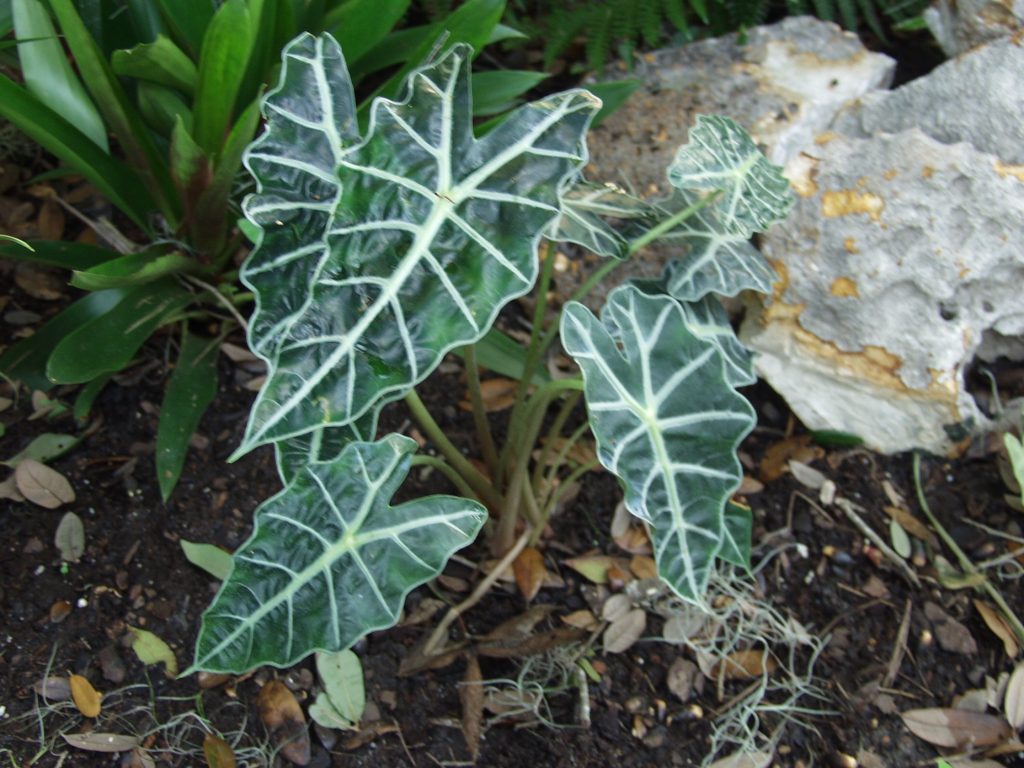
Elephant ears have stunningly large leaves with strong stalks in green, red, and purple hues. These plants are a great addition to your gecko’s vivarium but require special care.
The leaves are strong enough to hold several crested geckos, plus their stems won’t droop! It’s worth the effort; your gecko will love basking in the elephant ear leaves.
Maintenance: The elephant ear is a high-maintenance plant – not the best choice for beginners. It’s tropical, so it needs bright, indirect sunlight (max temperature: 85°F | 26°C) and high humidity (60% or higher); keep it moist but not submerged in water.
Wait for the plants to dry out before watering them again. Since it’s a heavy feeder, you’ll need to feed this plant with organic fertilizer once or every other month.
Toxicity: Elephant Ear plants are not toxic for crested geckos. However, they contain oxalic acid, which can harm children and furry pets.
Key Takeaways
- Growth Rate: Fast
- Sturdiness: The leaves and stems are both very strong.
- Light Requirements: Bright, indirect light
- Maintenance: High-maintenance – requires frequent watering, high humidity (60%+), well-draining soil and organic fertilizer.
- Toxicity: Non-toxic to reptiles
Installing and Arranging Plants in a Terrarium
Creating a naturalistic habitat for your crested gecko is like painting a miniature rainforest in your living room! And now that we’ve discussed the best plants to use let’s get into setting up and arranging them in a way that’s best for your buddy.
Wash the Plants
When you buy live terrarium plants for your gecko, it’s important to wash them with soap and water. Dangerous pesticides and chemicals are often found in the soil, which can be hazardous to your pet.
So, make sure you replace the soil with something safe. Watching for any diseases or insects on the leaves is also a good idea.
Potting or Planting
Now, you will have to decide whether to keep the plants in their pots or plant them directly into the substrate of your terrarium.
- You may find it easier to remove potted plants, but they can also fall over and crush your crested gecko.
- While planted plants will fit better and won’t topple over, they may root beneath the soil unexpectedly.
So, it’s really up to you and the risks you will take!
Substrate
You must be mindful when planting live plants in your tank – almost all of them won’t survive if their roots are submerged in water. So, you have to add a layer of loose, draining substrate to your tank. Gravel or sand will do the trick.
On the other hand, if you don’t want one type of plant to dominate the others, just put them in pots, water ’em, and put them back when you’re done. No matter what you do, cover the loose soil. Additives like vermiculite and pearlite can be a real bummer if your crestie ingests them.
Arrange Plants in Layers
To create a natural environment for your crestie, arrange your plants in layers, starting with the taller ones, such as snake plants or umbrella plants at the back, and the shorter ones, like Lemon Button at the front.
This will provide a vertical gradient for your gecko to climb and explore. Also – make sure that plants are closer to the window or an artificial source of light to get some light (direct or indirect).
Positioning Plants
To ensure you can easily spot your gecko, arrange your plants to provide a balance of coverage and visibility. While creating a lush environment, keep some clear sightlines in place.
How Often Should I Replace the Plants in My Enclosure?
Live plants in a crested gecko enclosure should be replaced as needed, which can vary depending on the specific plant species and the condition of the plants.
Generally, monitoring the plants regularly for signs of damage, wilting, or overgrowth is recommended. Replace plants that are dying, rotting, or consistently nibbled by the gecko.
Additionally, some plants may outgrow the enclosure or become difficult to maintain.
Regularly replacing live plants ensures a healthy and stimulating environment for your crested gecko and helps maintain the overall aesthetics and functionality of the enclosure.
Pros and Cons of Live Plants
Let’s discuss the advantages and disadvantages of using live plants in your crestie’s tank.
The Pros
- Promote natural biodiversity in your gecko’s enclosure.
- Encourage the crestie to explore and grow in a natural environment.
- Your pet will have ample space to exercise and roam around – especially if you modify the tank arrangement during your deep cleaning routine.
- Many are self-cleaning and do not need frequent cleaning, but cleaning the tank regularly is still important.
- Crested geckos can eat certain types of plants as their food, too.
The Cons
- Caring for some plants can be time-consuming, which may divert your attention from your geckos.
- If not given attention, they will take over the tank.
- To prevent the plants from overgrowing the tank, it is necessary to trim them frequently.
- You need to water them frequently and regularly. So you must monitor the tank’s humidity more closely.
13 Plants Not To Use in Your Crestie’s Enclosure
Here’s the list of some plants that are not suitable for your reptilian companion tank due to being either poisonous or dangerous in other ways.
- Cycads
- Poison ivy (Toxicodendron radicans)
- Mistletoe (Phoradendron villosum)
- Dumbcane (Dieffenbachia)
- Ivy (Hedera spp.)
- Voodoo lily (Dracunculus vulgaris)
- Calla lily (Zantedeschia aethiopica)
- Begonias (Begonia)
- Milkweed, Asclepias spp.
- Marijuana, Cannabis sativa
- Hyacinth (Hyacinthus orientalis)
- Bracken Fern (Pteridium aquilinum)
- Philodendrons
Risks of Including the Wrong Plants
Including the wrong plants in your crested gecko’s tank can lead to a range of risks for both you and your pet.
- Many common house plants contain toxic substances like oxalates, saponins, tannins, and phytochemicals that can harm reptiles. These chemicals can cause various issues, including skin irritation, digestive upset, allergic reactions, and even organ failure.
- In addition to toxins, some plants can also present a physical hazard, as they may have sharp or spiky leaves or fibrous material that could cause your gecko to tangle.
- Finally, some plants can also attract pests like mites, cockroaches, or ants. These pests can carry diseases and can easily spread throughout your reptile’s environment, causing potential health risks.
To avoid these issues, research any plants you plan to add to your crested gecko’s enclosure.
Take Care!
Having a safe and healthy home environment for your crested gecko is essential to ensure its health and well-being. With the right selection of plants, you can create a perfect habitat for them. The ten best safe plants for crested geckos are a great way to start. From the versatile Pothos and Snake Plants to the flowering Bromeliads and the drought-tolerant Alocasia, you can find a variety of safe plants to suit your crested gecko’s needs.
Just remember to do your research and keep an eye on any changes in their environment to make sure that they remain safe and healthy.
What kind of plants do you have in your crested gecko’s habitat? Have you ever noticed any changes in their behavior when a certain plant is present? Share your thoughts in the comments section below.

